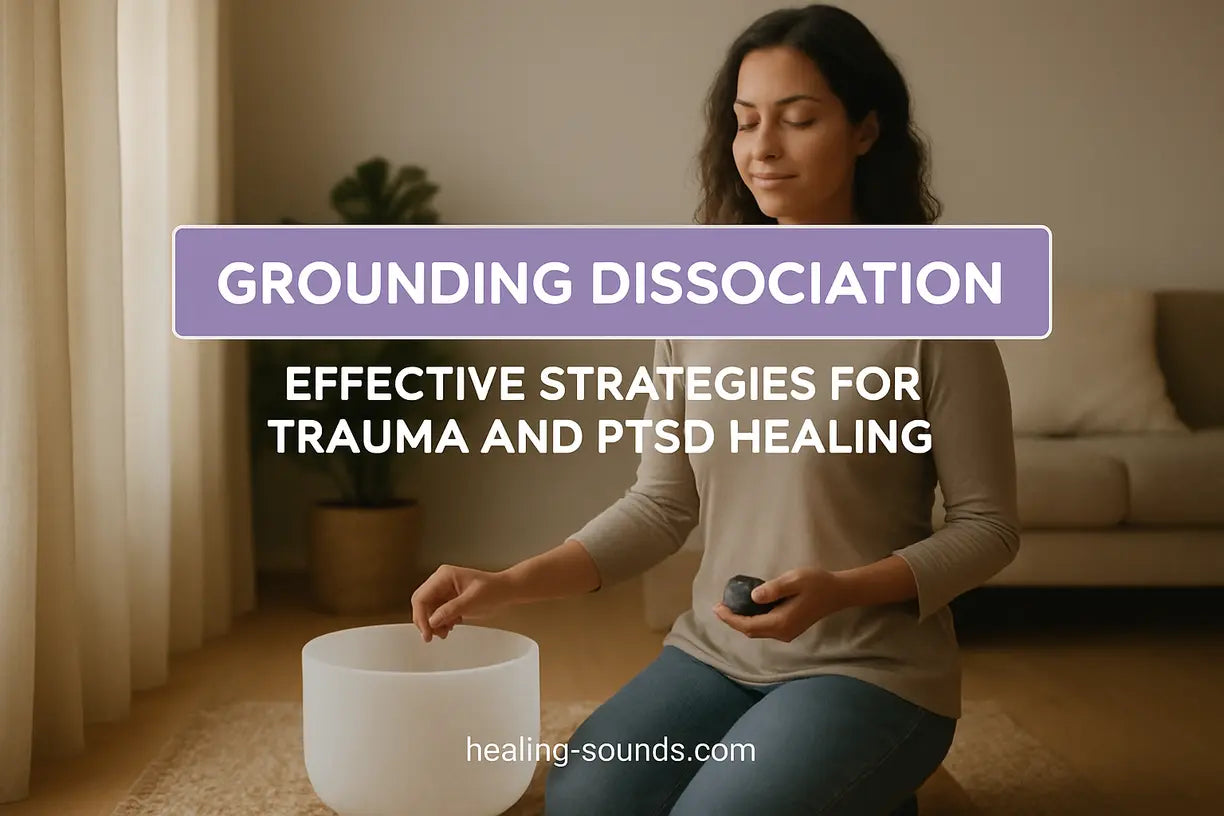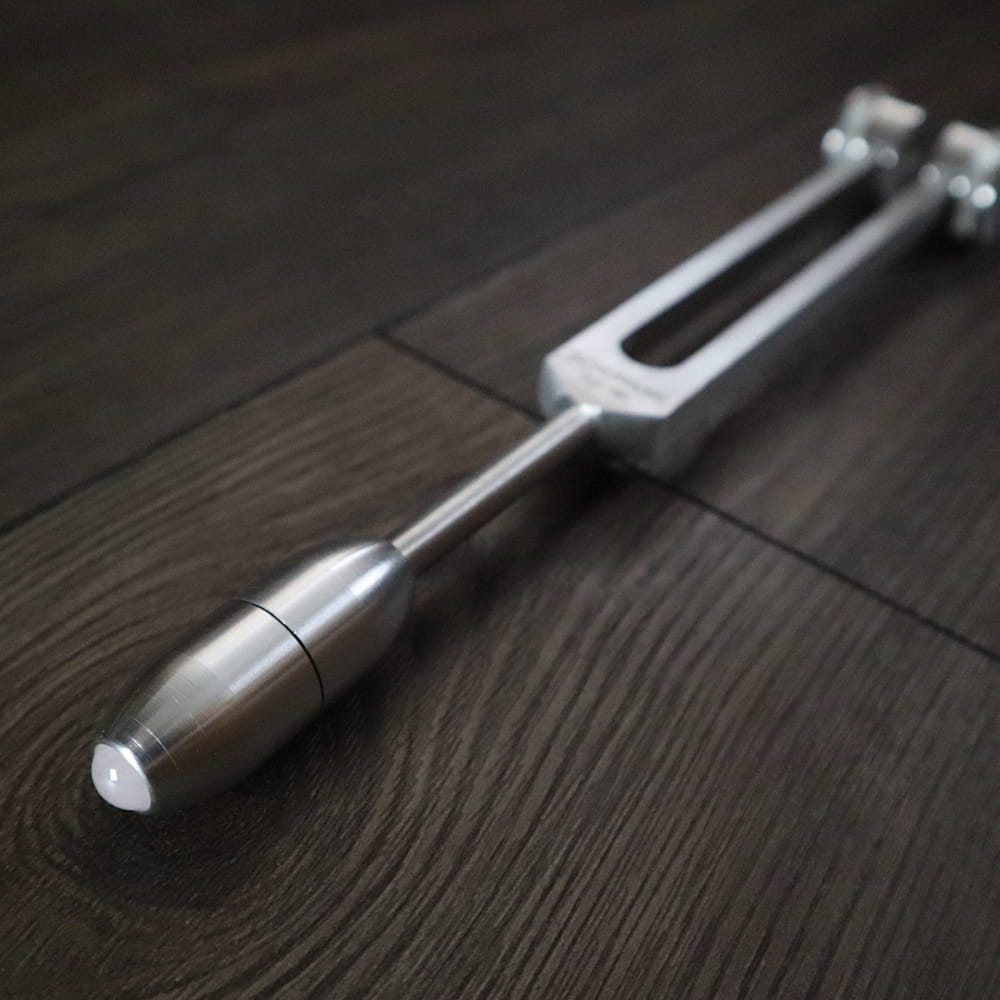Dissoziation verstehen: Wenn der Geist aussteigt
Im Kern ist Dissoziation ein mentaler Prozess, bei dem man eine Trennung von seinen Gedanken, Gefühlen, Erinnerungen oder seinem Identitätsgefühl erlebt. Es handelt sich dabei nicht um ein persönliches Versagen, sondern um einen hochgradig adaptiven Überlebensmechanismus . Bei überwältigendem Stress oder Trauma kann das Gehirn „abschalten“, um den Betroffenen vor der vollen Intensität des Erlebnisses zu schützen. Dies kann zwar kurzfristig hilfreich sein, chronische Dissoziation kann jedoch den Alltag beeinträchtigen und zu Gefühlen der Fragmentierung und Realitätsferne führen.
Häufige Auslöser dissoziativer Episoden sind Stress, Reizüberflutung oder Erinnerungen an vergangene Traumata. Dissoziative Episoden sind ein zentrales Merkmal der Posttraumatischen Belastungsstörung (PTBS), können aber auch bei Angstzuständen, Depressionen und anderen Erkrankungen auftreten. Dissoziation als das zu erkennen, was sie ist – eine Schutzreaktion – ist der erste Schritt zu einem effektiven Umgang damit.
Warum Erdung ein Rettungsanker bei Dissoziation und PTBS ist
Wenn es bei Dissoziation um Aussteigen geht, dann geht es bei Erdung um Zurückfinden . Erdung ist die Praxis, Ihr Bewusstsein im gegenwärtigen Moment zu verankern, indem Sie sich über Ihre fünf Sinne mit Ihrem physischen Körper und Ihrer unmittelbaren Umgebung verbinden. Es wirkt als starkes Gegensignal zum Alarmsystem des Gehirns und vermittelt Ihnen, dass Sie genau hier und jetzt in Sicherheit sind.
Der Mechanismus ist wunderbar einfach: Indem Sie Ihren Fokus bewusst von belastenden inneren Zuständen (wie Flashbacks oder überwältigenden Emotionen) auf neutrale, äußere Sinneswahrnehmungen lenken, unterbrechen Sie den dissoziativen Kreislauf. Das löscht zwar nicht die Belastung, schafft aber einen wichtigen Sicherheits- und Stabilitätsraum, der Ihrem Nervensystem die Regulierung ermöglicht. Betrachten Sie es als eine Fähigkeit – je mehr Sie üben, desto stärker und zugänglicher wird sie.
Praktische Erdungstechniken, die Sie überall anwenden können
Die besten Erdungsübungen sind diejenigen, die Sie jederzeit und überall anwenden können. Das Ziel ist, herauszufinden, was für Sie funktioniert. Experimentieren Sie mit diesen Techniken, wenn Sie sich ruhig fühlen, damit sie Ihnen vertraut sind und Sie sie in Momenten der Not leichter anwenden können.
Die 5-4-3-2-1-Methode: Ein sensorischer Anker
Dies ist eine der am weitesten verbreiteten und effektivsten Erdungstechniken bei Dissoziation, da sie systematisch alle Sinne anspricht. Wenn Sie das Gefühl haben, abzudriften, lenken Sie Ihre Aufmerksamkeit sanft durch die folgenden Schritte:
- Erkennen Sie fünf Dinge, die Sie sehen können: Schauen Sie sich um und benennen Sie fünf Objekte, ob groß oder klein. Achten Sie auf ihre Farbe, Form und Beschaffenheit. (z. B. „Ich sehe einen blauen Stift“, „Ich sehe das Licht an der Decke“)
- Achten Sie auf vier Dinge, die Sie fühlen können: Achten Sie auf Ihren Tastsinn. Achten Sie auf das Gefühl Ihrer Füße auf dem Boden, die Beschaffenheit Ihrer Kleidung oder die Temperatur der Luft auf Ihrer Haut.
- Achten Sie auf drei Dinge, die Sie hören können: Achten Sie genau auf drei verschiedene Geräusche. Es könnte das Summen eines Computers, Vogelgezwitscher draußen oder Ihr eigener Atem sein.
- Achten Sie auf zwei Dinge, die Sie riechen können: Versuchen Sie, zwei Gerüche in Ihrer Umgebung zu identifizieren. Vielleicht ist es der schwache Geruch von Kaffee, Seife an Ihren Händen oder einer Pflanze in der Nähe.
- Achten Sie auf eine Sache, die Sie schmecken können: Konzentrieren Sie sich auf eine Sache, die Sie schmecken können. Sie könnten einen Schluck Wasser trinken, den anhaltenden Geschmack von Zahnpasta wahrnehmen oder sich einfach auf den Geschmack in Ihrem Mund konzentrieren.

Körperliche und taktile Erdungsübungen
Die Verbindung mit dem eigenen Körper durch körperliche Empfindungen kann unglaublich kraftvoll sein. Ziel ist es, durch Berührung und Temperatur das Gehirn daran zu erinnern, dass man körperlich anwesend und verkörpert ist.
- Temperaturschock: Halten Sie ein Stück Eis in der Hand oder spritzen Sie sich kaltes Wasser ins Gesicht. Das plötzliche, intensive Gefühl kann den Nebel der Dissoziation schnell durchbrechen.
- Spüre deine Füße: Stehe auf und drücke deine Füße fest in den Boden. Stampfe ein paar Mal auf. Spüre die feste Verbindung zwischen deinem Körper und der Erde.
- Textur-Tour: Berühren Sie verschiedene Objekte in Ihrer Umgebung. Konzentrieren Sie sich auf das Gefühl – ist es glatt, rau, weich, hart, kühl oder warm? Ein Erdungsstein wie Hämatit kann ein wunderbarer Blickfang sein.
- Selbstumarmung: Umschließen Sie sich mit den Armen und drücken Sie fest zu. Dies gibt Ihnen ein beruhigendes propriozeptives Gefühl, das die Position Ihres Körpers im Raum vermittelt.

Auditive Erdung: Mit Klang wieder eine Verbindung herstellen
Klang ist eine Schwingung, die Ihr Bewusstsein sanft oder kraftvoll in die Gegenwart zurückholen kann. Während chaotischer Lärm ein Auslöser sein kann, kann gezielter Klang ein tiefgreifendes Mittel zur Erdung sein.
- Hören Sie aufmerksam zu: Wählen Sie ein Geräusch in Ihrer Umgebung und konzentrieren Sie sich ganz darauf. Es könnte das Ticken einer Uhr oder Regen am Fenster sein.
- Spielen Sie erdende Musik: Legen Sie ein Musikstück auf, das Sie besonders erdend finden. Das kann etwas mit einem starken, gleichmäßigen Beat oder ein beruhigender Ambient-Track sein.
- Kreieren Sie Ihren eigenen Klang: Summen, singen oder singen Sie. Die Vibration in Brust und Hals ist ein kraftvoller physischer Anker. Mit Instrumenten wie einer Stimmgabel oder einer Klangschale können Sie eine reine, resonante Frequenz erzeugen, auf die Sie sich leicht konzentrieren können und die Körper und Geist beruhigt.
[Sammlungs-Schieberegler]
Schumann 93,96 Hz Stimmgabel aus Metall mit Edelsteingriffen
$79.90 $129.90
Verwenden Sie diese Stimmgabel mit Erdfrequenz und Erdungskristallen zur Verankerung und Stabilisierung während dissoziativer Episoden.
Produkt entdeckenErstellen eines Grounding-Toolkits für fortlaufenden Support
Während spontane Techniken unerlässlich sind, kann die Schaffung einer Umgebung, die Ihr Wohlbefinden unterstützt, einen erheblichen Unterschied machen. Ein „Grounding Toolkit“ ist eine persönliche Sammlung von Gegenständen, auf die Sie zurückgreifen können, wenn Sie sich überfordert oder dissoziiert fühlen. Wenn Sie diese Werkzeuge zur Hand haben, müssen Sie in Krisenmomenten nicht an etwas denken.
Ihr Set kann eine Box oder einfach ein spezieller Platz in Ihrem Zuhause sein, der Gegenstände enthält, die Ihre Sinne ansprechen und Ihnen Trost spenden. Dieser proaktive Ansatz stärkt Ihr Gefühl von Handlungsfähigkeit und Bereitschaft, was insbesondere bei der Durchführung von Erdungsübungen bei PTBS hilfreich ist.

Erwägen Sie die Verwendung von Gegenständen wie einer Gewichtsdecke, einer Duftkerze oder ätherischem Öl, einem glatten Stein, einem Stück dunkler Schokolade oder einem Erdungsarmband, das Sie täglich tragen können. Erdungsrituale, wie zum Beispiel ein kurzes Klangbad mit Kristallschalen am Ende des Tages, können ebenfalls dazu beitragen, Ihr Nervensystem dauerhaft zu regulieren.
Wichtige Werkzeuge für Ihre Erdungspraxis
$39.99
$49.99
Tragen Sie dieses Armbandset aus Hämatit und Achat für eine anhaltende energetische Erdung und zum Schutz vor emotionaler Überforderung. Mehr erfahren ➔
$2,790.00
Schaffen Sie zu Hause mit diesen Chakren-ausgerichteten Kristallklangschalen ein beruhigendes, erdendes Klangbad für eine tiefe Wiederverbindung. Mehr erfahren ➔
Integrieren Sie die Erdung in Ihr tägliches Leben
Die wahre Kraft von Erdungstechniken entfaltet sich, wenn sie zu einem festen Bestandteil Ihres Lebens werden und nicht nur eine Reaktion auf eine Krise darstellen. Durch regelmäßiges Üben dieser Übungen bauen Sie ein „Muskelgedächtnis“ für Ihr Nervensystem auf. Dadurch erreichen Sie leichter und schneller einen geerdeten Zustand, wenn Sie ihn am meisten brauchen. Untersuchungen von Quellen wie dem National Center for PTSD unterstreichen die Bedeutung solcher Selbsthilfestrategien im Umgang mit Symptomen.
Versuchen Sie, eine kurze Erdungsübung in Ihren Alltag zu integrieren. Nehmen Sie sich beispielsweise gleich nach dem Aufwachen 60 Sekunden Zeit, um sich auf Ihre Füße auf dem Boden zu konzentrieren, oder wenden Sie die 5-4-3-2-1-Methode an, während Sie darauf warten, dass Ihr Kaffee durchläuft. Die Kombination dieser Techniken mit Achtsamkeit und Atemarbeit kann eine starke Synergie für die Emotionsregulation schaffen – ein Konzept, das durch Studien zu sensorischen Ansätzen in der psychischen Gesundheit unterstützt wird. Je mehr Sie üben, desto stärker stärken Sie Ihre Fähigkeit, präsent und belastbar zu bleiben.
Ihr Weg zu Präsenz und Sicherheit
Der Umgang mit Dissoziation und den Nachwirkungen eines Traumas kann sich isolierend anfühlen, aber Sie sind nicht allein und haben die Kraft, Ihr Selbstwertgefühl zurückzugewinnen. Erdungstechniken für Dissoziation sind mehr als nur einfache Übungen; sie sind Akte des Selbstmitgefühls und der Selbstermächtigung. Sie sind ein Zeichen dafür, dass Sie es verdienen, sich in Ihrem eigenen Körper sicher, präsent und vollständig zu fühlen.
Beginnen Sie mit Neugier und Geduld, die Techniken in diesem Leitfaden zu erkunden. Entdecken Sie, welche sensorischen Anker Sie am meisten ansprechen. Ihre Reise zurück in den gegenwärtigen Moment beginnt mit einem einzigen Schritt, einem einzigen Atemzug, einem einzigen Geräusch. Nutzen Sie diese Werkzeuge und vertrauen Sie auf Ihre Fähigkeit, zu heilen und sich wieder zu verbinden.
Häufig gestellte Fragen zur Erdung bei Dissoziation
Um aus einer Dissoziationsphase herauszukommen, wende Erdungstechniken an, die deine Sinne zurück in die Gegenwart bringen. Versuche, Eis zu halten, dir kaltes Wasser ins Gesicht zu spritzen, mit den Füßen fest auf den Boden zu stampfen oder einen starken Duft wie Pfefferminzöl zu verwenden. Die 5-4-3-2-1-Methode ist auch sehr effektiv, um systematisch wieder mit deiner Umgebung in Kontakt zu treten.
Absolut. Erdung ist eine der wichtigsten und am häufigsten empfohlenen Strategien zur Bewältigung von Dissoziation. Sie funktioniert, indem Sie Ihren Fokus bewusst von überwältigenden inneren Gedanken oder Gefühlen auf neutrale, äußere Sinneswahrnehmungen lenken. Dies unterbricht den dissoziativen Zustand und hilft Ihrem Nervensystem zu erkennen, dass Sie im gegenwärtigen Moment sicher sind.
Die Vorstellung von „fünf Phasen“ ist ein weit verbreitetes Missverständnis. Dissoziation lässt sich besser als ein Spektrum von Erfahrungen verstehen als als eine lineare Abfolge von Phasen. Zu diesen Erfahrungen können Derealisation (das Gefühl, die Welt sei unwirklich), Depersonalisation (das Gefühl, von sich selbst losgelöst zu sein), Gedächtnislücken (Amnesie), Identitätsverwirrung und in schweren Fällen Identitätsveränderung gehören.
Therapeuten behandeln Dissoziation mit verschiedenen traumainformierten Ansätzen. Gängige Methoden sind die Traumafokussierte Kognitive Verhaltenstherapie (TF-CBT) , die Eye Movement Desensitization and Reprocessing (EMDR), Somatic Experiencing und die Dialektisch-Behaviorale Therapie (DBT). Ein zentraler Bestandteil all dieser Therapien ist die Vermittlung von Erdungstechniken als grundlegende Fähigkeit zur Sicherheit und Emotionsregulation.
Die 5-4-3-2-1-Technik ist eine sensorische Erdungsübung, die Ihre Aufmerksamkeit wieder auf die Gegenwart lenkt. Sie identifizieren achtsam: 5 Dinge, die Sie sehen können, 4 Dinge, die Sie fühlen können, 3 Dinge, die Sie hören können, 2 Dinge, die Sie riechen können, und 1 Sache, die Sie schmecken können. Die Technik führt Sie systematisch durch Ihre Sinne und verankert Sie in Ihrer unmittelbaren Umgebung.







